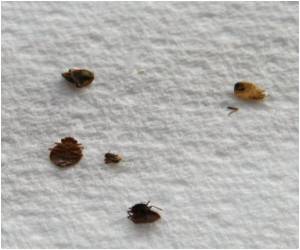The most powerful nation on earth is despairing what to do with such a tiny insect like the bedbugs. They are popping up everywhere, and pest control firms are having a rollicking time of it.

In New York City, the irascible little critters have forced temporary closures of a Times Square movie theater as well as tony retail chains Hollister, Abercrombie & Fitch and Victoria's Secret. They've moved into the Empire State Building and the Brooklyn District Attorney's office, not to mention the rarefied halls of Elle magazine. Bedbug complaints from city residents have soared from just over 500 in 2004 to 10,000 in 2009, according to news reports.
In Ohio, dubbed the new "Bedbug Capital of the United States," some residents have taken to sleeping on the streets just to get away from their co-habitants, reported Time magazine. But other areas are getting bitten, too. According to exterminator company Terminix, while Ohio is the most infested state, the top five cities for bedbugs are New York City, Philadelphia, Detroit, Cinncinnati and Chicago.
They've even made it to California, with reports of outbreaks at hotels in Monterey and Big Sur.
The National Pest Management Association (NPMA) in the U.S., reports that there has been a 71% growth in bedbug reports since 2001. They also suggests the world is on the verge of a bedbug pandemic
The bed bug epidemic is so bad that the Environmental Protection Agency (EPA) warned this month against the indoor use of chemicals that are designed to be used outside only. The agency also warned of an increase in pest control companies and others making “unrealistic promises of effectiveness or low cost.”
Advertisement
Bedbugs are most commonly found in furniture or bedding, and when they invade a room they will get into nooks and crannies like the space between the baseboard trim and the wall, making them hard to find and kill.
Advertisement
Why the comeback? Experts are blaming the resurgence largely on a surge in humans traveling internationally.
"There has been increased travel, particularly international travel, and that really speaks to how bedbugs move around," said Missy Henrikson, NPMA vice president of public affairs. "They need humans for their very survival so they have become more mobile and move right along with people. They're hitchhikers."
And travel begets more travel and more infestations. "They are taking up residence in people's homes and because of that they are now traveling about throughout the day with people, going into atypical locations, such as movie theaters, retail establishments, hospitals, schools, day care centers, laundromats -- all of the places where people travel during course of their day," Henrikson said.
Add to that the fact that bedbugs are now resistant to a number of pesticides.
"DDT is the insecticide that really made them extinct up through the latter part of the last century. Then when DDT was banned, they gradually became resistant to a number of commonly used insecticides," said Dr. Pascal James Imperato, dean of the School of Public Health at the State University of New York Downstate Medical Center.
Now that they're back, they generally like places where there is a lot of turnover, he added, like dormitories, homeless shelters and hotel rooms, including high-end hotels.
"Bedbugs are very happy in either a very clean environment or a very dirty environment," Imperato said. "What they basically need is a warm host and plenty of good hiding places so that even very clean houses and high end hotels can harbor bedbugs. They're found everywhere. They're very democratic."
And once they've established themselves, they're awfully hard to get rid of.
"Our industry has identified bedbugs as being the single most difficult pest to eliminate, more so than termites, more so than ants, more so than rodents," said Henrikson. "They can live up to a year without eating, so they can be hiding behind your wallboards, under your rugs, in your clothing, underneath your couch, in hiding waiting for a time when they need to feed." Female bedbugs can produce 400 offspring in her lifetime, she added.
In addition to certain insecticides, pest control companies are getting pretty creative with other tools, including bedbug-sniffing dogs, heating a house up to 140 degrees to kill the critters and even the "freeze" treatment, using frozen carbon dioxide, said Dr. Mike Merchant, professor and extension urban entomologist at Texas AgriLife Extension Service, Texas A&M University in Dallas.
The silver lining is that bedbugs don't transmit disease and don't pose any huge health problem, outside of stress and anxiety.
Source-Medindia







